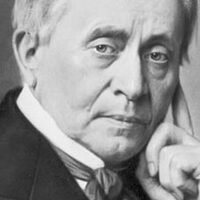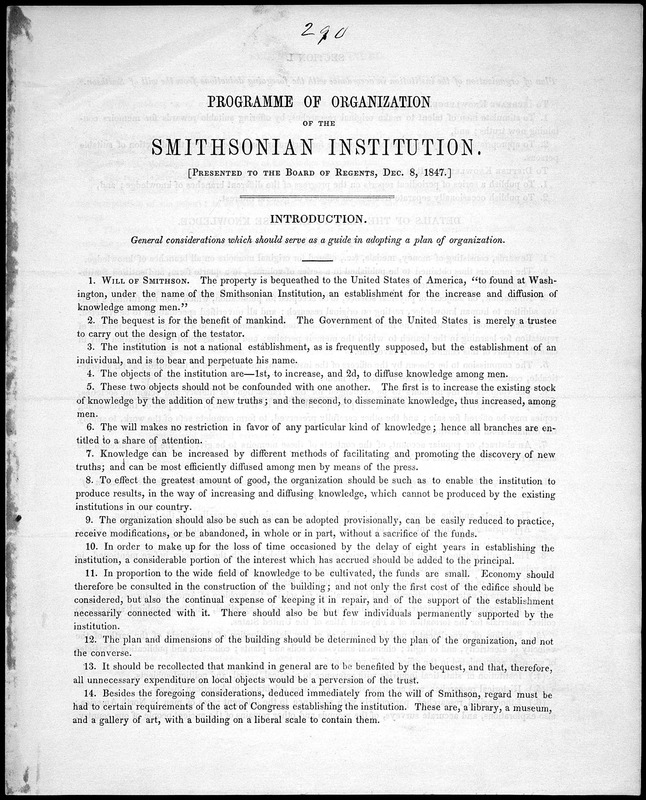Joseph Henry’s vision for the Smithsonian Institution
Joseph Henry was born in 1797 and grew up in Albany, NY. His life-long interest in science began when he happened to pick up a book called, Popular Lectures on Experimental Philosophy, Astronomy, and Chemistry, which explained the concepts of physical science for children. Years later he passed the book on to his son with the inscription, “It opened to me a new world of thought and enjoyment, invested things before almost unnoticed with the highest interest(,) fixed my mind on the study of nature and caused me to resolve at the time of reading it that I would immediately commence to devote my life to the acquisition of knowledge (Reingold, xxii).” After graduating from the Albany Academy, he taught mathematics and natural philosophy there until he left in 1832 to teach at the College of NJ, becoming First Chair of Natural History. His two decades in academia and scientific research, especially in the field of electromagnetics, shaped and influenced his eventual vision for the Smithsonian Institution.
Immediately following the establishment of the Smithsonian Institution by the US Congress, Alexander Dallas Bache, personal friend of Henry’s and member of The Board of Regents, sought his input for how it should be administered. Through their correspondence, Henry’s vision was revealed. As a man of science, Joseph Henry had a very specific agenda about what he thought James Smithson intended in his will. Based on prior, direct experiences with leading scientific organizations in Europe, Henry came to conclude that the most effective means of increasing knowledge would be through financially supporting the labs and scientific research of small groups of the nation’s leading scientists. Because he had personal experience with a lack of funding for basic scientific research in the US, it shaped his deeply held beliefs. But Henry’s more extreme views were at odds with that of Congress. He believed that Congress had made a mistake in how they interpreted Smithson’s will and saw himself as the only one who could properly execute the benefactor’s wishes. He was deeply concerned that the money would be squandered, especially on elaborate and to him, unnecessary buildings. He believed the institution should be limited in scope, and could fully operate out of one room with a handful of employees. Any programs that could be handled by other existing US organizations should not fall under the purview of the Smithsonian. His vision was singularly focused on a belief that an ‘increase’ of knowledge should take precedent over ‘diffusion’ of knowledge, and because he saw “thousands of institutions actively engaged in the diffusion of knowledge in our country, but not a single one which gives direct support to its increase (Washburn, 109),” the Smithsonian Institution’s purpose should be to support scientific research in the US.
Joseph Henry outlined his specific agenda in the ‘Programme of Organization of the Smithsonian Institution,’ which drove every decision he made during his almost 30-year tenure as the first Secretary of the Smithsonian Institution. Wilbert E. Washburn, who described Henry’s vision in the book, A Cabinet of Curiosities: Five Episodes in the Evolution of American Museums compared Henry’s vision to that of a military mission, and to make sure that no one would forget it, Henry had the ‘Programme’ reprinted in every annual report issued to the Board of Regents while he was Secretary. Even though he had to make several concessions and accept compromises from Congress regarding funding, he continued to stress the importance of scientific research over acquiring collections that, to him, no longer held any value in research. His beliefs were eventually put to the test with the appointment of the nationally known librarian, Charles C. Jewett.

